Last Chance to Catch NYC's Holiday Notalgia Train
We met the voices of the NYC subway on our nostalgia ride this weekend!


The Whitney Museum reopens its doors today at significantly reduced capacity with timed ticketing and new guidelines in place for the safety and well-being of both visitors and staff. The very first of the new exhibitions coming this fall is called Around Day’s End: Downtown New York, 1970–1986. Drawn from the Whitney’s collection, it shows a selection of works of twenty two artists that explore downtown New York as site, history, and memory. From the West Side piers and Meatpacking District to Bowery and Lower East Side, various artists who were active on downtown scene in the 1970’s and early 1980’s present their interventions in the urban fabric of the city.
Works on view at the show were created at an earlier time of New York fiscal crisis when a lot of places were abandoned. This actually inspired artists to explore New York as a dynamic and provocative place to create site specific projects and moments of poetry and beauty in unlikely locations.
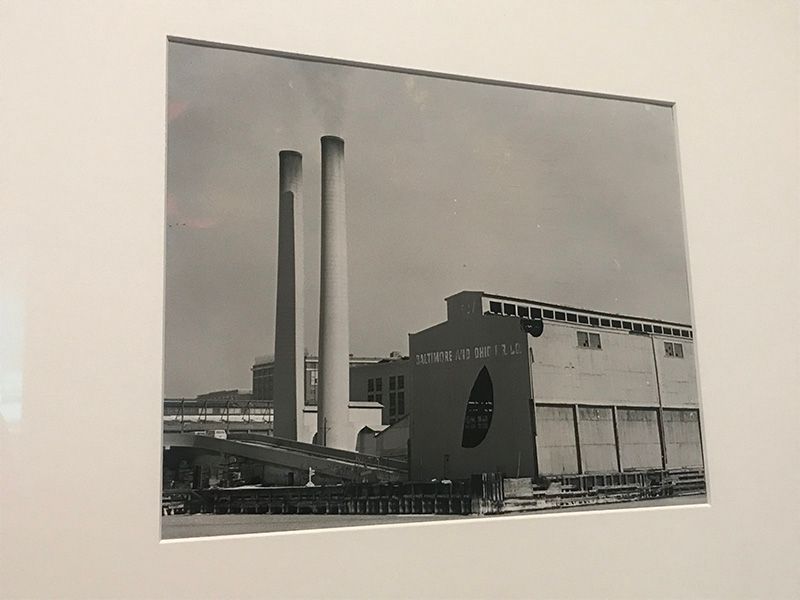
Photo by Gordon Matta-Clark in exhibition Around Day’s End. Installation photo taken by Monika Hankova.
Gordon Matta-Clark’s legendary Day’s End (1975) is central to the presentation. It is a photography documentation of the action made in former shipping warehouse on Pier 52. In the summer of 1975 Matta-Clark illegally entered an abandoned industrial shed. Trained as an architect, he used several tools to remove pieces of the building, and opened its interior to both the river and the sunlight. This “indoor park”, which the artist himself called “temple to sun and water”, inspired an eponymous public artwork by David Hammond that is to be located in Hudson River Park later this fall. This “ghost monument” to late Matta-Clark and allusion to the history of New York’s working waterfront will serve as a three-dimensional transparent blueprint of the Pier 52 shed. This new minimalist sculpture will hover over the water along the south side of Gansevoort Peninsula, directly across from the museum, within the footprint of the former Pier 52.
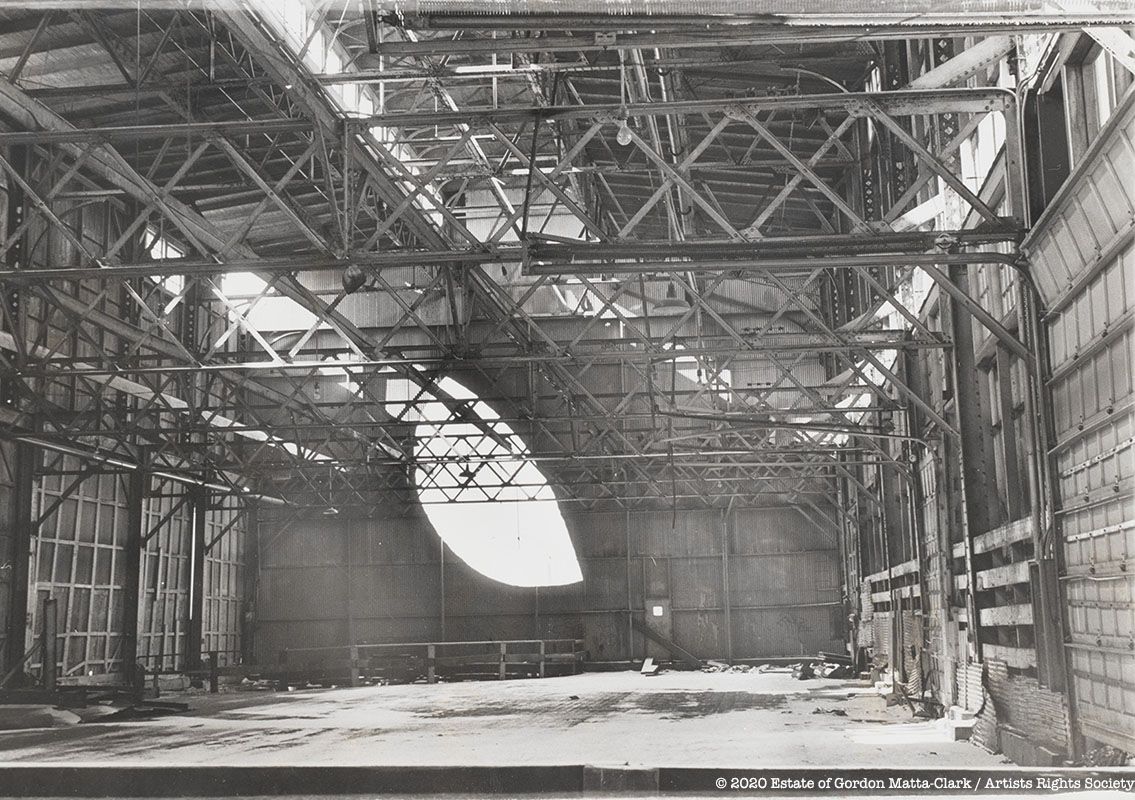
Gordon Matta-Clark (1943-1978), Days End Pier 52.3 (Documentation of the action “Day’s End” made in 1975 in New York, United States), 1975, printed 1977. © 2020 Estate of Gordon Matta-Clark / Artists Rights Society (ARS), New York
Gordon Matta-Clark, together with Joan Jonas whose 16 mm film Songdelay (1973) is shown at the exhibition, present the city itself in a featured role, pointing to New York as “a place that embodies both presence and invisibility”. Joan Jonas, known for her pioneering work in performance and video art, embraced the city as her material, activated the cityscape by making it her art space through a series of outdoor performances in either natural or industrial settings. In this black-and-white film Jonas created a highly original if enigmatic theatrical language of gesture and sound, and presented New York as a character.
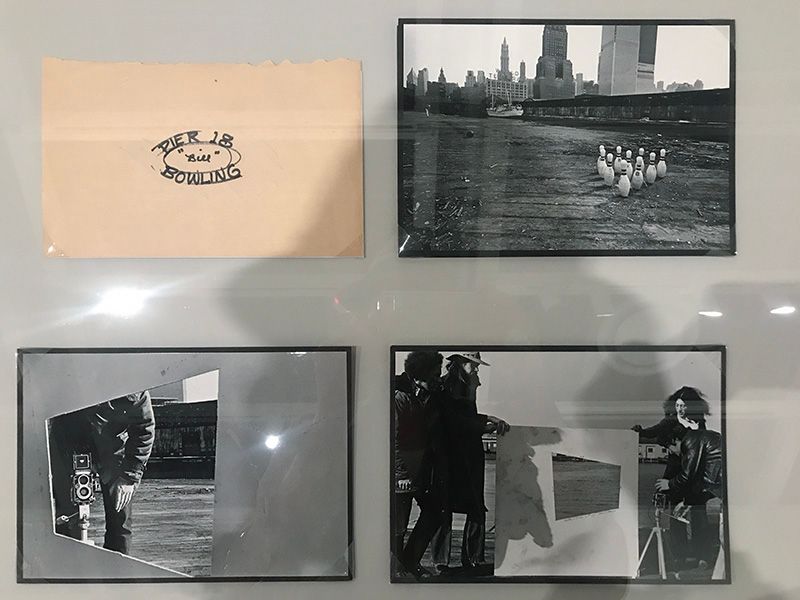
Bowling on Pier 18. Installation photo taken by Monika Hankova.
Alvin Baltrop, a self-taught photographer, was a fixture of the Hudson river piers community from 1975 to 1986. His depictions of the West Side piers and Meatpacking District reveal how marginalized populations found community and intimacy in forgotten places on the periphery of the city. Baltrop lived out of a van along West Side, documenting the architecture of the waterfront and an underground gay culture. He created intimate poetic portraits of many of the area’s frequenters, including major figures such as Marsha P. Johnson (LGBTQ civil rights activist best known for her role in the Stonewall Uprising that has been lately acknowledged by the dedication of East River State park to her). Baltrop’s pictures read as “a searingly honest, poetic and personal archive of the piers as a place of artistic community and sexual freedom, but also of danger and urban decay.”
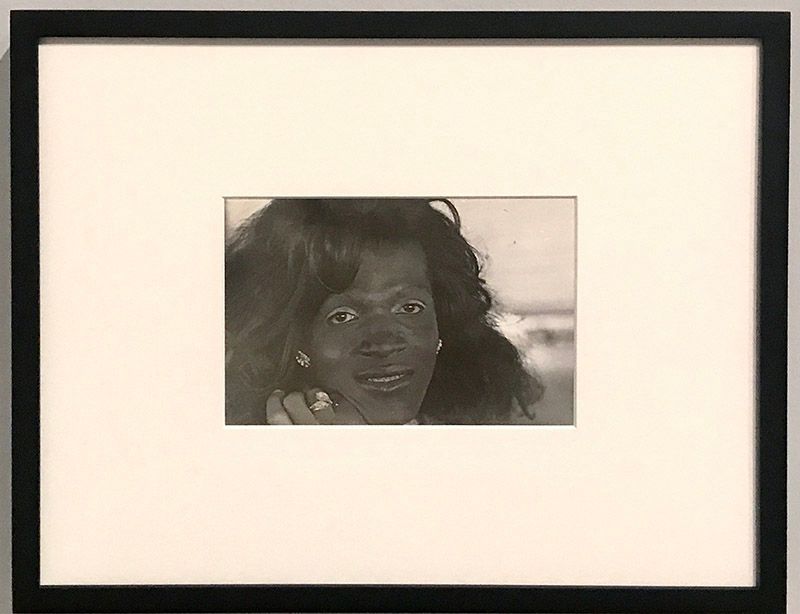
Photograph by Alvin Baltrop. Installation image by Monika Hankova.
Battery Park City has been once a beachfront that provided a surreal stage for artists and students (the beach were actually the sand dunes on the empty landfill). In early 1971, curator and critic Willoughby Sharp invited twenty seven artists to submit proposals for series of projects to take place on Pier 18 that stood in the shadow of World Trade Center, then still under construction. The exhibition presents photographs of some of the submitted works taken by the German photographer Harry Shunk and his Hungarian partner János Kender. Based in New York, the pair chronicled the art world; they documented numerous ephemeral performances, exhibitions and site specific projects.
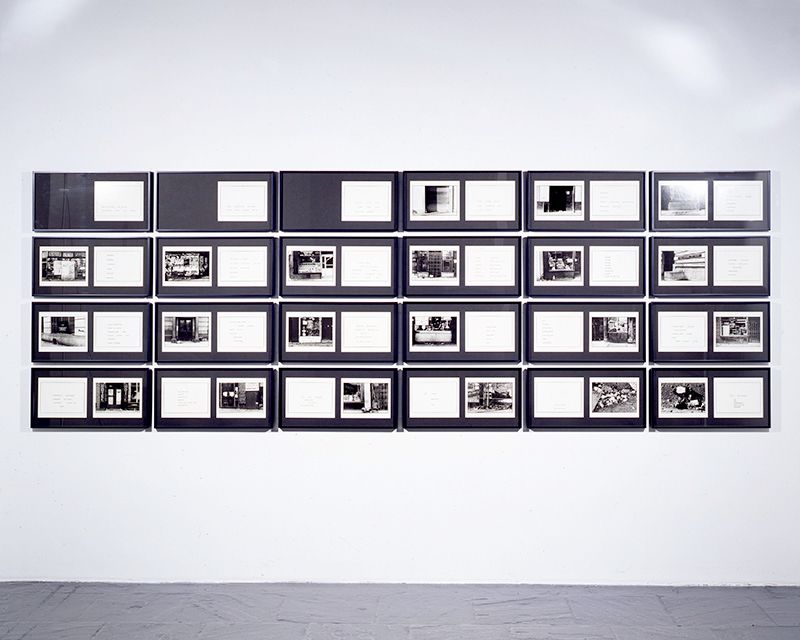
Martha Rosler (b. 1943), The Bowery in two inadequate descriptive systems, 1974/1975. © 1975 Martha Rosler
Some works on view engage with the ways particular downtown neighborhoods, like the Bowery and Lower East Side, were impacted by deteriorating economic conditions. Relevant artworks (photographs, photo collages, and objects) by widely famous artists such as Basquiat, David Wojnarowicz, Martha Rosler, Kiki Smith, Richard Serra, or Christo are included in the show as well.
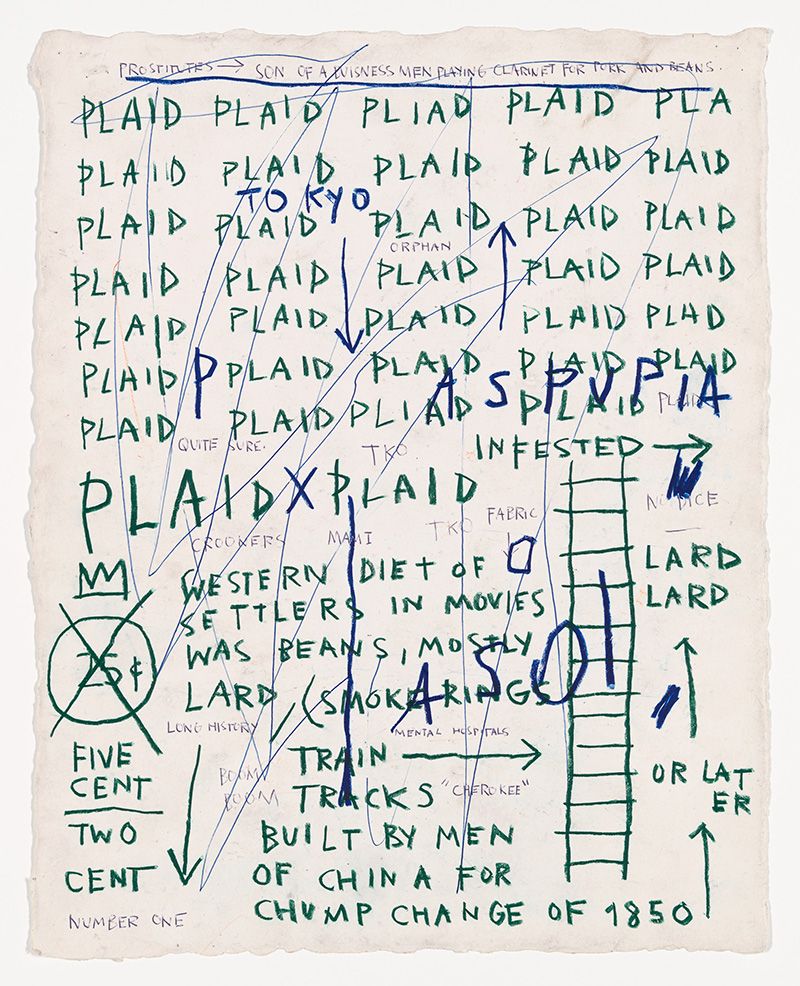
Jean-Michel Basquiat, Untitled (Plaid). © The Estate of Jean-Michel Basquiat. Licensed by Artestar, New York
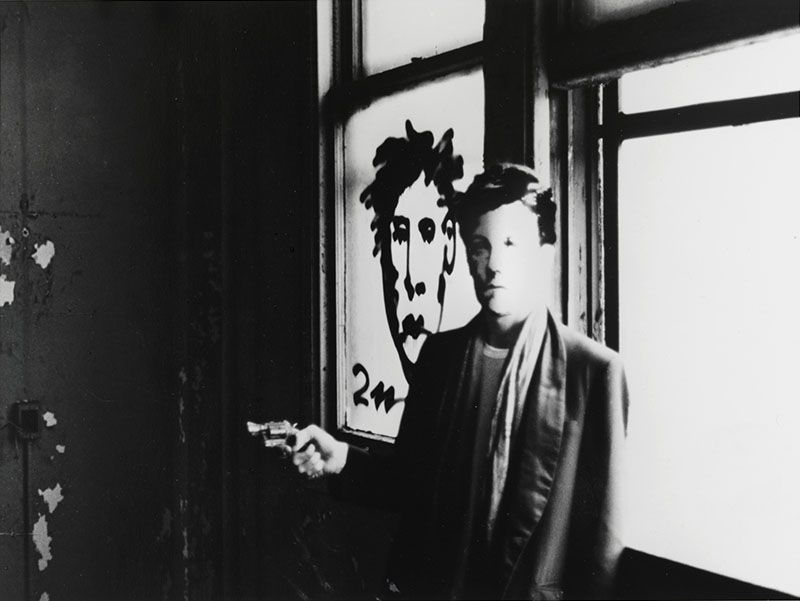
David Wojnarowicz (1954-1992), Arthur Rimbaud in New York, 1978, printed 1990, from the series Arthur Rimbaud in New York. © The Estate of David Wojnarowicz and P.P.O.W. Gallery, New York
Assistant curator Laura Phipps, an organizer of the exhibition, says: “While there is something disquieting about today’s parallels with many of the issues and the conditions these artist were addressing at that time – economic uncertainty, crumbling infrastructure, disappearing public space – it can also be reassuring or inspiring to look back at the incisive approached artists took with the physical material and ephemeral ideas of New York City to imagine ways through and forward.”
Around Day’s End: Downtown New York, 1970–1986, is on display from September 3 to October, 25, 2020.
Subscribe to our newsletter